Can You Drive On a Flat Tire? Risks, Fixes, & FAQ
-
Pete Ortiz
- Last updated:
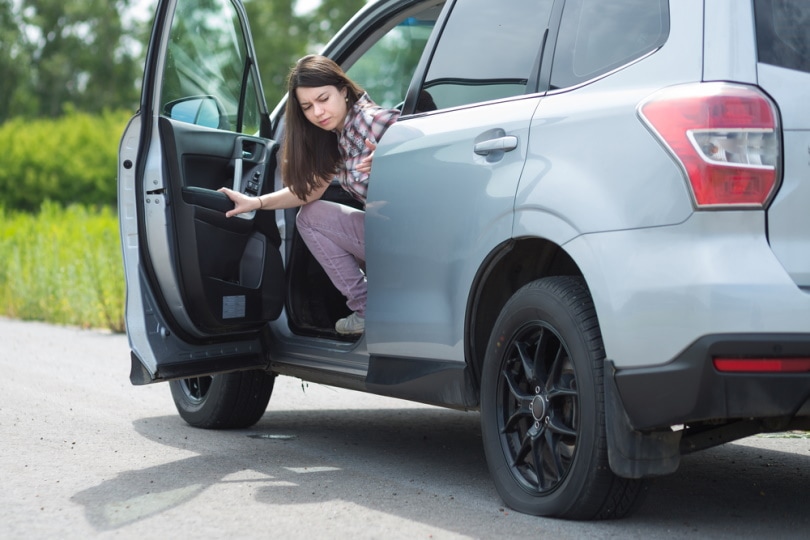
Accidents are an entirely normal part of driving, and all of us have experienced having a flat tire at some point. Road bumps, sharp rocks, potholes, and rim damage cause wear and tear and can quickly lead to flat tires. When this happens, many people wonder if they can continue driving their vehicles or not.
Generally, you can only drive your car for a few hundred yards when your tire is flat, but even such a small distance could cause more severe damage to your vehicle. The best thing you can do is pull off from the road and either try to fix the tire or reach out to someone for help.
What Happens if You Drive a Car With a Flat Tire?
Although driving your car with a flat tire doesn’t seem like a big deal to some people, it can put both you and your passengers’ lives in danger while damaging your vehicle. A flat tire will lower your ability to handle the car adequately. Managing a vehicle with a flat tire can lead to structural damage to the brakes, wheel, alignment, and other car components such as your steering or suspension system.
If you drive the vehicle with a flat tire, you risk paying an even higher price if other components get damaged, so it’s best to pull off and resolve the problem without driving the vehicle.
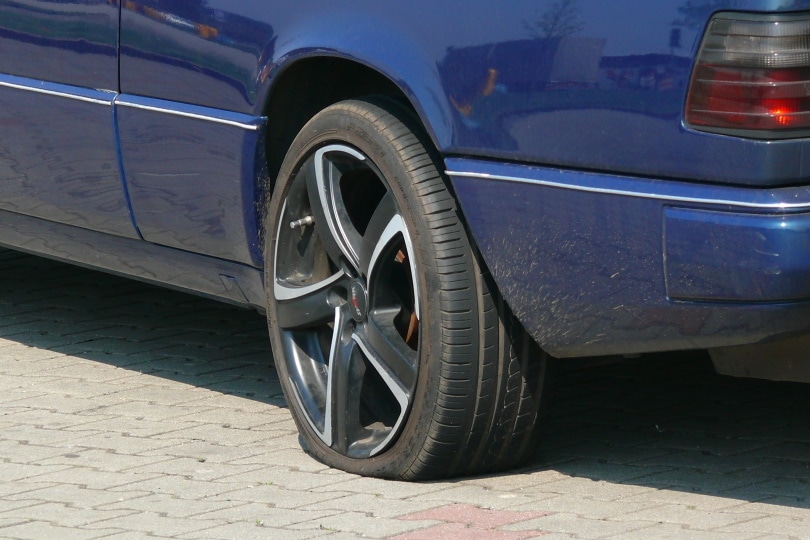
How To Fix a Flat Tire (5 Steps)
Although fixing a flat tire might seem complicated, it’s actually very simple. While it won’t resolve the issue altogether, it will buy you enough time to take the car to a mechanic without paying for towing your car.
To change a flat tire, you’ll need:
- Spare tire
- Basic tools kit
- Plug
- Air pump
If you have all the materials the repair process is straightforward. Check out the steps below to fix a flat tire.
1. Locate the leak
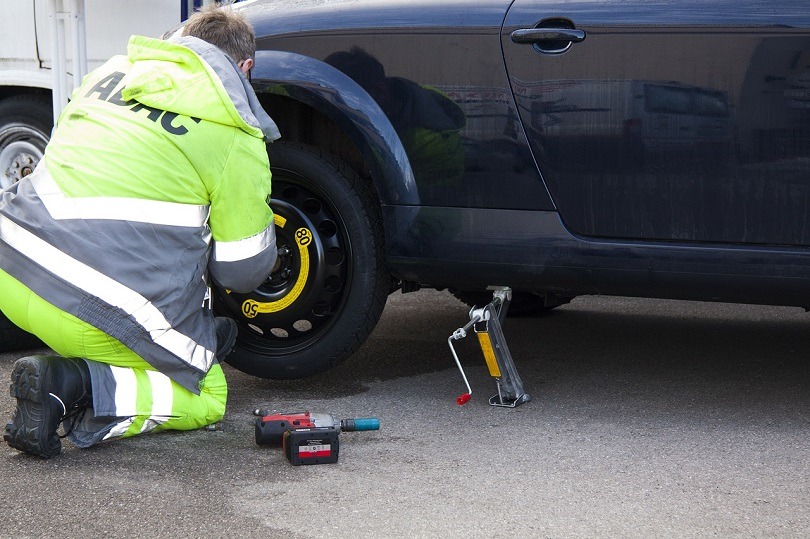
First, you should locate the leak to know why your tire is running flat. Inspect the tire to see if there’s something stuck inside that would cause the leak. We advise marking the spot with tape or a noticeable marker so that you can quickly find the leaking area again.
2. Loosen lug nuts and jack up the vehicle
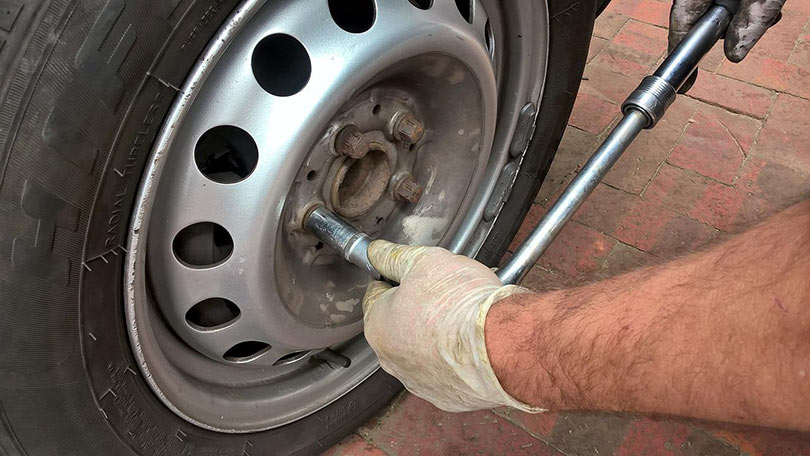
Once you know where the leak is coming from, it’s time to loosen your lug nuts by using a wrench. That way, you’ll be able to get the tire off the vehicle. Once you finish, use a car jack to get the vehicle off the ground so that you can undisturbed work on the tire.
3. Clean the leak area
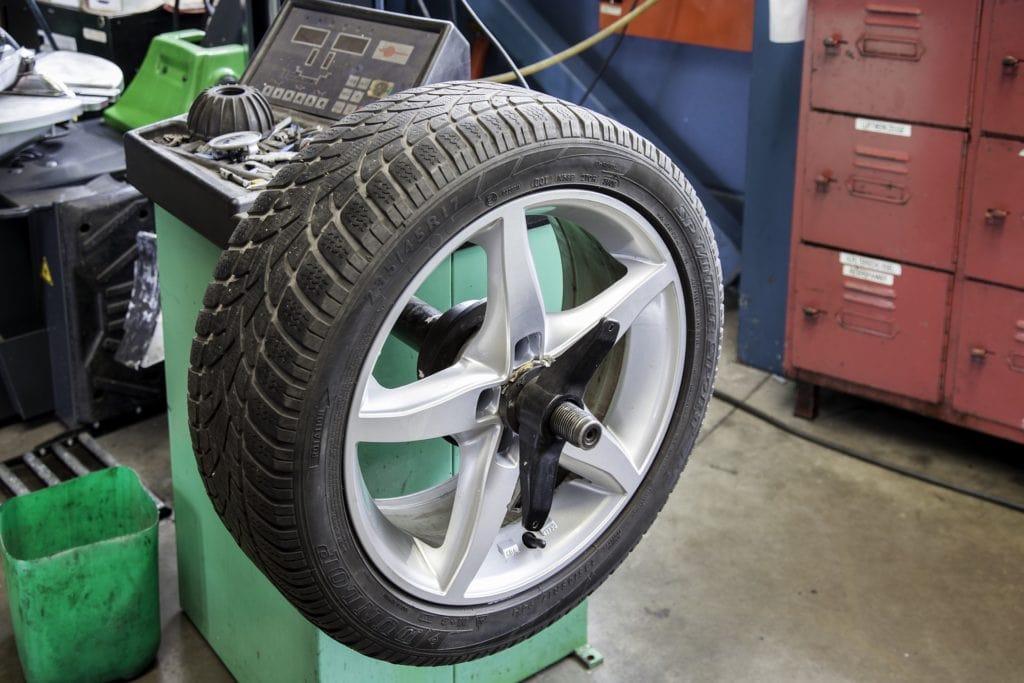
Once you secure your car with the jack, you can either change the tire and put a spare tire instead or patch up the leaking area. If you plan on replacing the whole tire, this step won’t be necessary. However, if you want to patch the hole, you’ll first need to take your wheel off to clean the leaking area.
4. Plug the leak
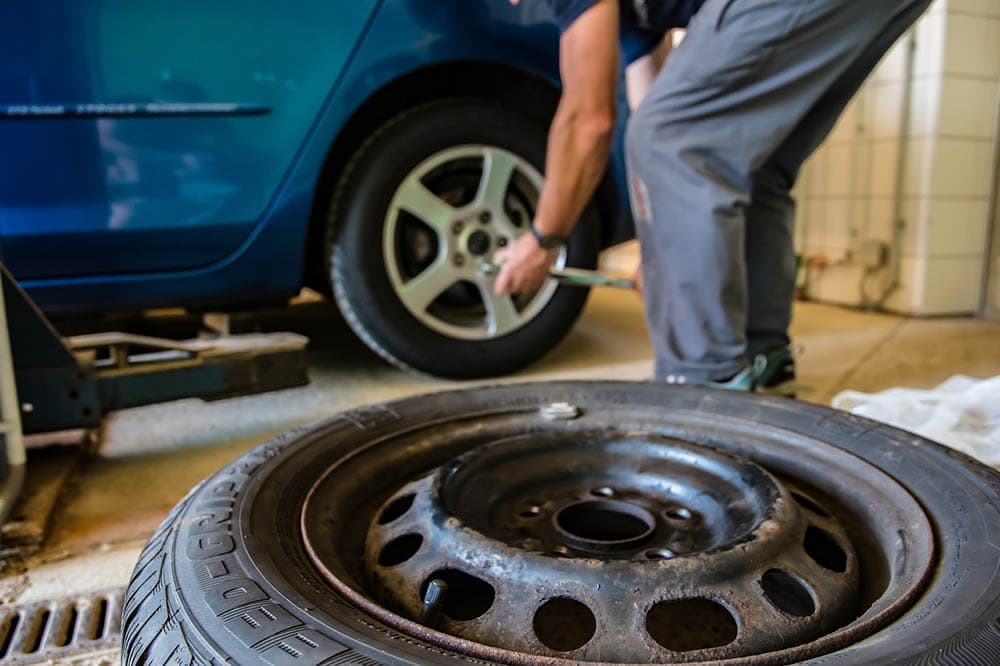
You can skip this step if you’re putting up a spare tire. If you’re patching a hole in the flat tire, you’ll need to insert a plug after the area is clean. We also recommend using adhesive in the area to make it more secure and reliable. Leave the tire to sit for a couple of minutes, allowing the adhesive to dry out. After it’s set and dry, you can re-inflate the tire and put it back on your vehicle.
5. Go to a mechanic
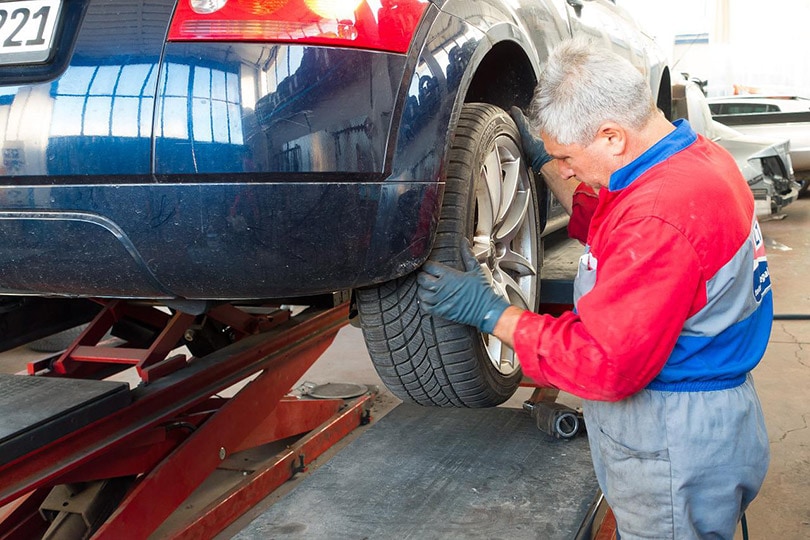
All of these steps will help you get to a mechanic safely, but as they are a temporary fix, make sure you visit the mechanic. The mechanic will check the old tire and let you know if it needs a complete replacement or if it can be fixed.
Spare tires are not secure, so never use them as regular tires.
How Can I Prevent Flat Tires?
You can do a couple of different things to prevent flat tires or at least lower the chances of getting a flat tire. Below are our recommendations on how to keep your tires in good shape.
Check the tire pressure
One of the essential tire maintenance rules is checking the tire pressure regularly. To ensure your safety and the functionality of your vehicle, check the tires at least once a month.
When checking the pressure, wait at least 3 hours after driving as that’s when the tires will become “cold.” For checking the pressure, use a tire pressure gauge and ensure that the pressure matches your vehicle’s manual.

Rotate and inspect tires
Other than checking the tire pressure, you should inspect and rotate your tires when necessary. Tire rotation allows you to spread out wear on your tires, making them last longer. Typically, you should rotate your tires every 5,000–10,000 miles, and you can combine the timing of tire rotation and oil change to save time and money.
Also, try to visually inspect your tires weekly for any signs of damage and tear. If you notice bubbles, cracking, or other visual damage, it might be time to get new tires for your car.
Be on the lookout for road hazards
While driving, try to be aware of your surroundings and look out for any road hazards you may encounter. Large road debris, potholes, nails, rocks, and pieces of glass can damage your tires even without puncturing them. They can create bulges and cuts that quickly lead to a flat tire and more damage.

Don’t surpass the road tire load limit
Other than the tire pressure, tires also have a load limit printed on their side. More loads cause more stress and damage to your tires, and exceeding the load limit can lead to a flat tire.
Always be aware of the load you’re driving and know how much weight you’re loading onto your car. If needed, increase the pressure in your tires but don’t exceed the tire pressure maximum.
Conclusion
Driving on a flat tire is unsafe and can lead to severe vehicle damage. If you notice your tire going flat, pull off the road and try to fix the issue. If you’re feeling unsure, it’s always best to call someone to tow your car and take it to a mechanic. Don’t stress and try not to drive the vehicle if you notice any tire issues.
- “Can You Drive With a Flat Tire?”
- “This is what happens if you drive on a flat tire”
- “Can i drive on a flat tire?”
- “How Far Can You Drive on a Flat Tire?”
- “Can you drive on a flat tire? What to do when you get a flat.”
- “Can You Drive On A Flat Tire, How Far Can You Drive & Is It Illegal?”
- “Is it safe to drive with a flat or punctured tyre?”
Featured Image Credit: ZephyrMedia, shutterstock
Contents


